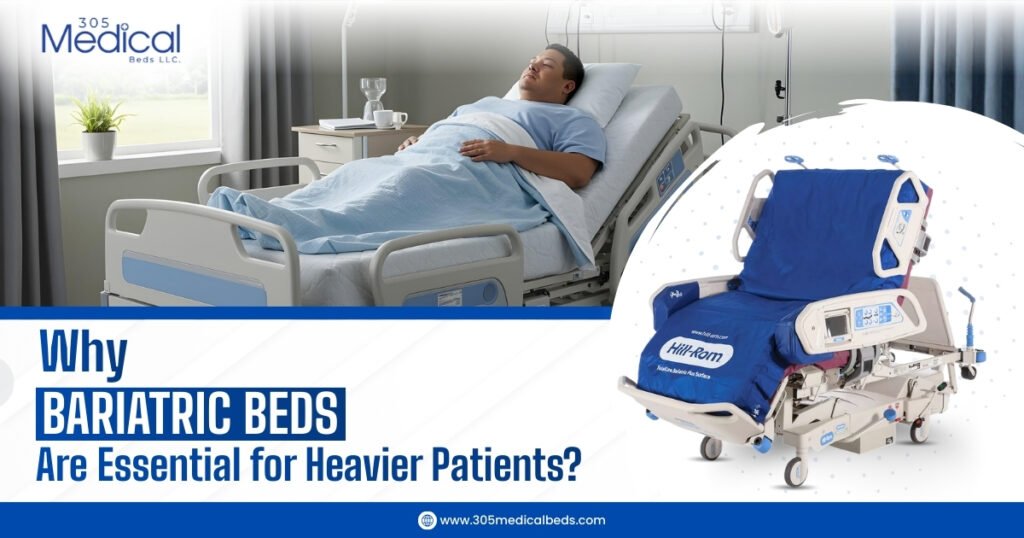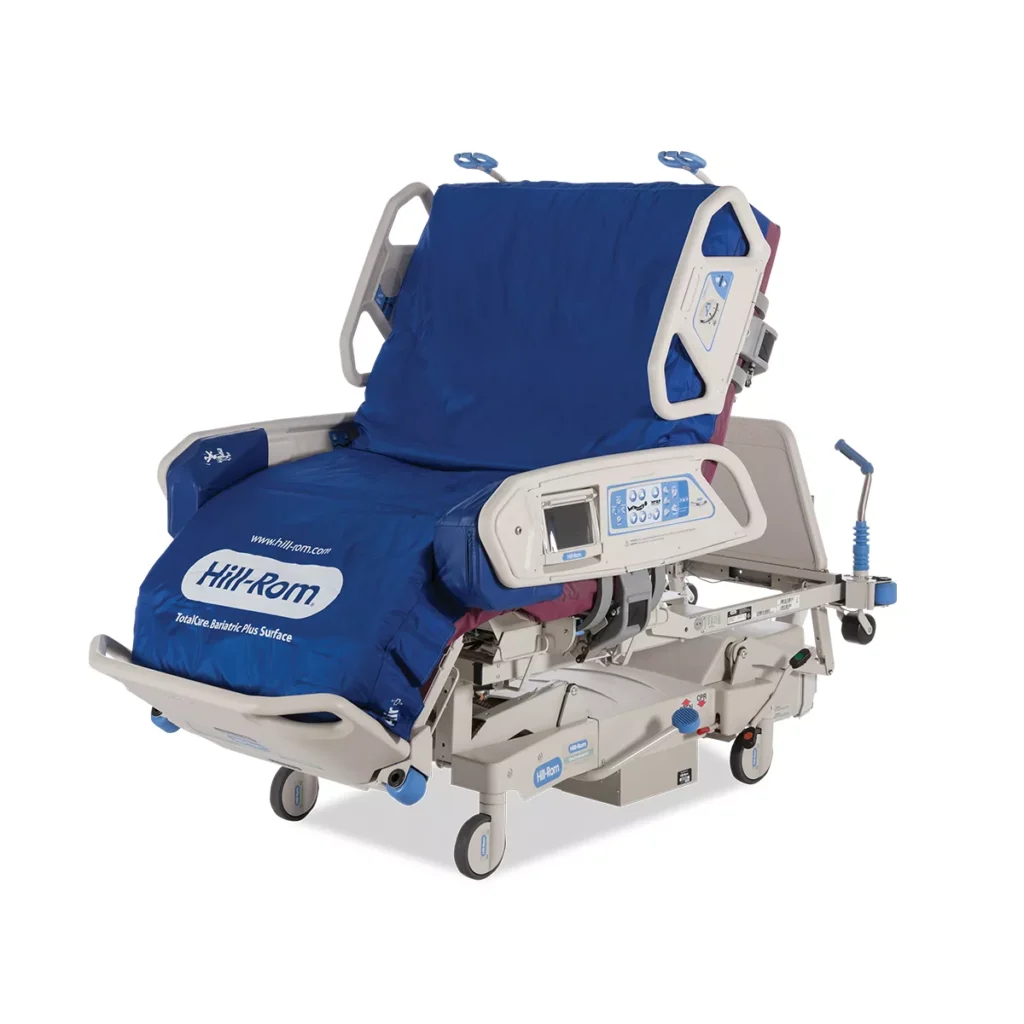
Patient comfort, safety, and proper medical support are critical elements in any healthcare environment. For overweight and obese patients, these needs become even more important due to increased pressure risk, mobility challenges, and the limitations of standard hospital beds. This is where bariatric beds play a vital role.
Bariatric hospital beds are specifically designed to accommodate higher weight capacities, provide wider sleeping surfaces, and enhance patient comfort and caregiver safety. In this updated guide, we explore why bariatric beds matter, their features and benefits, their types, and how choosing the right one can significantly improve patient outcomes.
What Is a Bariatric Bed?
A bariatric bed is a heavy-duty hospital bed engineered to support patients weighing 350-1,000 lbs or more, depending on the model. Unlike standard hospital beds, bariatric beds provide:
- Increased weight support
- Wider sleeping surfaces
- Enhanced stability
- Better pressure distribution
- Advanced caregiver-assist features
These beds ensure a safe, comfortable, and medically supportive environment for heavier patients who are at greater risk of pressure sores, falls, and mobility challenges.
Why Bariatric Beds Are Essential for Heavier Patients
Traditional hospital beds often do not provide adequate stability or comfort for heavier individuals. Research shows that:
- Obese patients have a 4× higher risk of pressure ulcers when placed on standard beds (AHRQ).
- Caregiver back injuries are reduced by up to 60% when using bariatric-capable medical equipment (NIOSH).
A bariatric bed solves these issues by offering a stable platform, wider space, and improved weight distribution, reducing pressure points and preventing skin breakdown.
Key Benefits for Patients
✔ Even weight distribution reduces pressure ulcers
✔ Wider space provides comfort and prevents falls
✔ Stronger frames enhance safety
✔ Specialized mattresses support heavy weights without sagging
✔ Adjustable positioning improves breathing, circulation, and healing
Key Features of Bariatric Beds
1. Increased Weight Capacity
These beds are built to hold significantly higher weights, ensuring the patient rests securely.
2. Wider Frame for Comfort
Extra width (usually 42–48 inches) gives obese patients adequate room, reducing friction and discomfort.
3. Electric Height & Position Adjustments
Most bariatric beds include easy-to-use electric controls that allow:
- Head elevation
- Foot elevation
- Trendelenburg positions
- Height adjustments for safer transfers
4. Pressure-Reducing Mattresses
Bariatric mattresses redistribute weight evenly, preventing painful pressure ulcers.
5. Durable Steel Construction
Heavy-gauge metal ensures stability, durability, and long-term performance.
6. Safety Rails & Mobility Assistance
Rails and grab bars help patients move independently and prevent accidental falls.
How Bariatric Beds Support Healthcare Providers
A bariatric bed is as beneficial to caregivers as it is to patients. Features such as electric height adjustment, wider access points, and sturdy support structures reduce the risk of caregiver injury while making repositioning and transfers easier.
Benefits for caregivers include:
- Reduced risk of back injuries
- Easier access for repositioning
- Faster and safer patient transfers
- Improved workflow efficiency
How Bariatric Beds Improve Recovery & Rehabilitation
Patient recovery depends heavily on comfort, mobility support, and proper sleep posture. Bariatric beds enable:
- Better sleep quality
- Improved respiratory support
- Reduced skin breakdown
- More effective physical therapy sessions
- Faster healing and shorter hospital stays
Electric adjustability allows patients to sit upright, engage in therapy exercises, and reposition themselves without strain.
Standard Hospital Beds vs Bariatric Hospital Beds
Below is a quick comparison to highlight why bariatric beds are necessary:
| Feature | Standard Hospital Bed | Bariatric Hospital Bed |
|---|---|---|
| Weight Capacity | 250–350 lbs | 500–1,000+ lbs |
| Bed Width | 36 inches | 42–48 inches |
| Mattress Type | Standard foam | Pressure-relief bariatric mattress |
| Stability | Moderate | High stability for heavy weight |
| Mobility Support | Basic | Advanced rails, support bars |
| Caregiver Safety | Lower | Much higher |
Types of Bariatric Beds
1. Manual Bariatric Beds
Budget-friendly but requires manual adjustment. Sturdy and reliable for basic needs.
2. Electric Bariatric Beds
Most recommended for hospitals and home care due to:
✔ Electric height control
✔ Easy back/leg adjustment
✔ Smooth mobility
✔ Greater caregiver safety
3. Premium Bariatric Beds (Hill-Rom, Stryker, etc.)
These beds come with:
- Integrated scales
- Advanced pressure redistribution
- Caregiver alert systems
- Customized positioning options
Factors to Consider When Choosing a Bariatric Bed
When selecting the right bed, keep these factors in mind:
- Weight capacity (must exceed patient weight)
- Bed width and dimensions
- Electric vs manual controls
- Mattress type and pressure relief
- Durability and frame quality
- Added features (rails, alarms, integrated scales)
Hill-Rom TotalCare P1840 Bariatric Plus
If you need a reliable and high-performance bariatric hospital bed, the Hill-Rom TotalCare P1840 Bariatric Plus is one of the best options used in hospitals nationwide.
Why This Bed Stands Out
- Supports up to 1,000 lbs
- Extra-wide surface (42–48 inches)
- Full-electric adjustments
- Built-in SafeView safety alerts
- Integrated patient weighing scale
- Advanced pressure redistribution mattress
- Industry-leading Hill-Rom build quality
Whether used in a hospital, rehab center, or at home, this bed provides unmatched comfort, stability, and patient safety.
View or Purchase Here:

Conclusion
Bariatric beds are a vital component in delivering safe, comfortable, and effective care for overweight and obese patients. With specialized features such as enhanced weight capacity, wider frames, advanced support surfaces, and electric adjustments, they drastically improve patient outcomes and make caregiver tasks safer.
Choosing the right bariatric bed—such as the Hill-Rom TotalCare P1840 Bariatric Plus—ensures both comfort and stability for patients who need extra support. Investing in the proper equipment not only improves recovery and safety but also elevates the overall quality of healthcare.
Frequently Asked Questions
1. What weight can a bariatric bed support?
Most models support 500–1,000 lbs, depending on the manufacturer and design.
2. Can bariatric hospital beds be used at home?
Yes, especially electric models that are designed for home caregivers and long-term comfort.
3. Are bariatric beds covered by insurance?
In many cases, yes—if medically necessary and prescribed by a doctor.
4. What mattress is used for a bariatric bed?
A pressure-relieving bariatric mattress designed to distribute weight evenly and prevent skin damage.
5. Do bariatric beds help reduce bedsores?
Absolutely. They reduce pressure points and friction, significantly lowering the risk.





